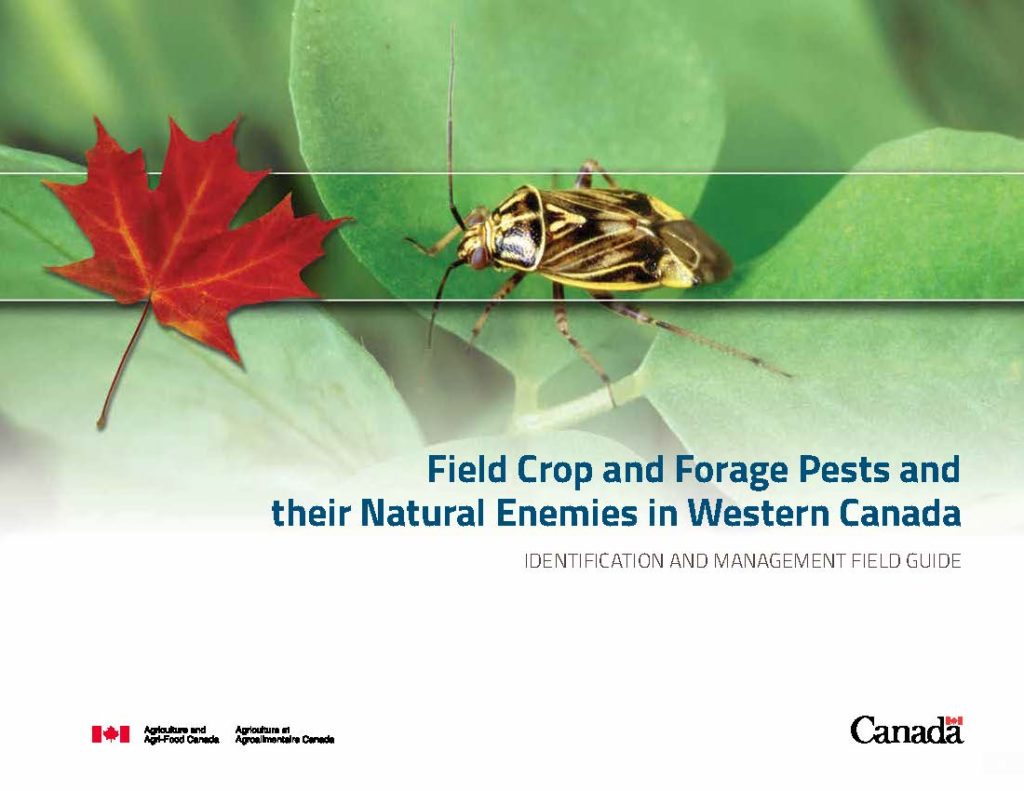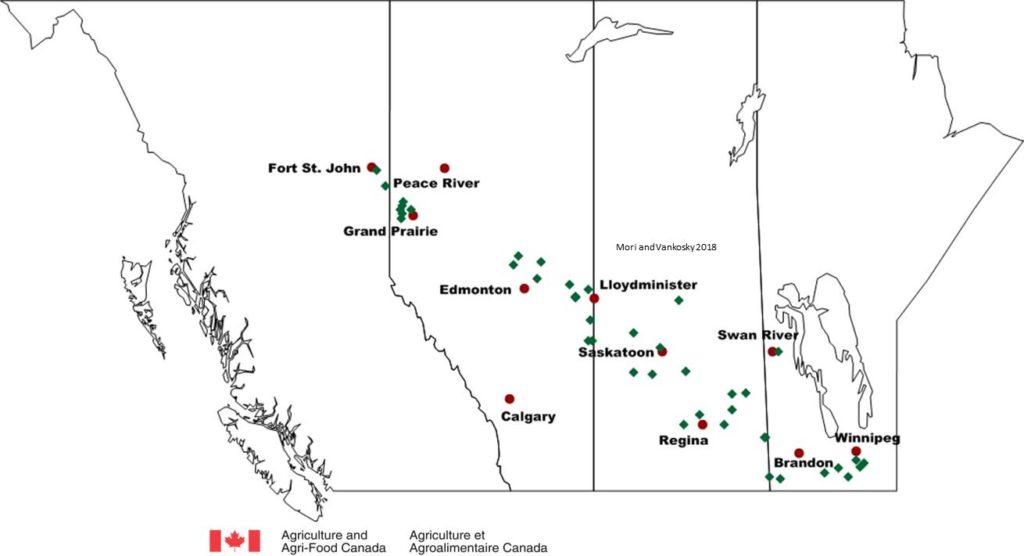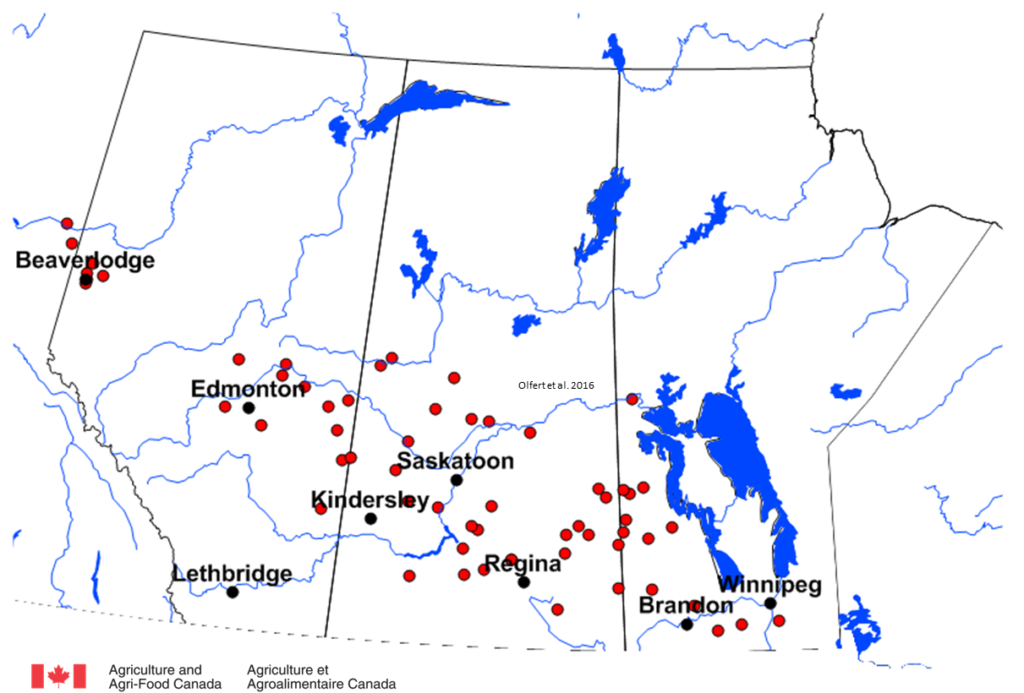In 2018, swede midge pheromone traps were deployed at 41 sites across the Prairie region of Canada to monitor adult populations of this brassica pest. Of the 41 trap sites, 16 were located in Alberta, 19 in Saskatchewan (where positive swede midge identifications were made in 2007 and 2009), and 6 in Manitoba.
None of the traps were positive for swede midge in 2018.
We are grateful to all of the producers, agronomists, and cooperators who participated in the 2018 swede midge monitoring project. Without your assistance, we could not have supported such a thorough and widespread pheromone monitoring program.
We also extend our thanks to Jonathon Williams for organizing the program, distributing trapping materials, and processing returned sticky cards for adult swede midge.
Because of the serious threat that swede midge poses to canola production, it is vital that monitoring for swede midge continues across the Prairies. At this time, plans are being made for the 2019 swede midge monitoring program. We hope that we can count on your support and cooperation in 2019.
At this time, plans are being made for the 2019 swede midge monitoring program. Agrologists or growers interested in performing weekly monitoring in 2019 are encouraged to contact Jonathon Williams, Boyd Mori, or Meghan Vankosky for more information.
Agriculture and Agri-Food Canada, Saskatoon Research and Development Centre
More information about swede midge can be found by:
- Referring to the Canola Watch article by Dr. Julie Soroka or accessing a new Ontario fact sheet produced by Baute et al. 2016.
- Accessing the swede midge pages within the new Field Guide which is available as a free download in either English or French.






